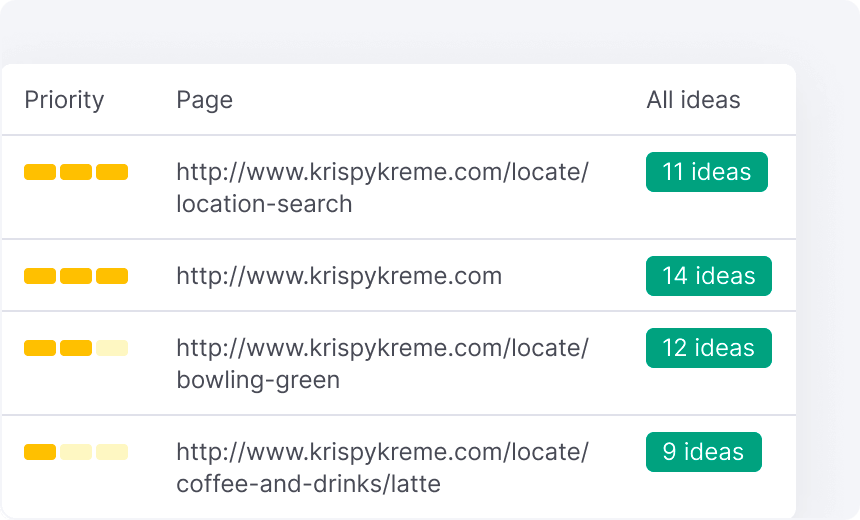Unveiling What Is Ruled Out a Default Medium in Google Analytics
Unveiling What Is Ruled Out a Default Medium in Google Analytics
Blog Article
Introducing the Unconventional Mediums in Google Analytics Beyond Default Settings
In the world of electronic analytics, Google Analytics stands as a foundation for businesses seeking to comprehend their on-line presence. While default settings provide beneficial insights, truth depth of comprehending hinge on exploring the non-traditional tools that often go unnoticed. By venturing beyond the surface and diving right into the details of social media data, email campaign efficiency, reference traffic sources, direct traffic patterns, and customized channel collections, a bonanza of information awaits those happy to accept a much more nuanced technique. What lies beneath these unconventional tools might just redefine exactly how companies perceive and plan their on-line efforts.

Leveraging Social Network Insights
Periodically ignored, yet tremendously beneficial, is the method of leveraging social media sites understandings within the realm of Google Analytics. By incorporating data from systems like Facebook, Twitter, Instagram, and LinkedIn into Google Analytics, organizations can acquire a much deeper understanding of their audience and the effectiveness of their social networks projects.
Via this assimilation, marketing experts can analyze and track customer actions on their website that originates from social networks platforms. They can determine which social networks channels are driving one of the most traffic, which web content is resonating with the audience, and which campaigns are converting the most leads. This insight enables data-driven decisions to enhance social networks approaches and boost total marketing efficiency.
Furthermore, by combining social media insights with Google Analytics, businesses can create more targeted and personalized campaigns - what is not considered a default medium in google analytics. They can use demographic information, passions, and on-line actions collected from social networks to fine-tune their audience segmentation and deliver customized messages that reverberate with certain client groups. This targeted method can result in higher involvement, raised conversions, and inevitably, enhanced return on investment
Discovering Email Campaign Efficiency
Revealing Email Campaign Performance entails assessing crucial metrics and performance indicators to evaluate the performance of e-mail marketing initiatives. When diving into e-mail campaign performance, it is essential to assess metrics such as open prices, click-through rates, conversion prices, and unsubscribe rates. Open prices indicate the percentage of receivers that opened the email, giving understanding into the performance of subject lines and sender names. Click-through rates measure the percent of recipients who clicked web links within the email, revealing involvement levels. Conversion prices track the portion of recipients that completed a desired activity after clicking a link in the e-mail, such as making an acquisition or signing up for an e-newsletter. Finally, unsubscribe prices highlight the number of receivers who decided out of receiving additional emails, clarifying e-mail content top quality and relevance. By analyzing these metrics, marketers can adjust their email campaigns for much better involvement and performance.
Analyzing Reference Traffic Resources
After reviewing the performance of e-mail projects via key metrics such as open rates and conversion prices, the following essential step is analyzing referral website traffic resources in Google Analytics to understand where internet site visitors are originating from and how they connect with the website. Reference traffic sources describe the internet sites that route customers to your website with clickable links. By delving into this data, businesses can gain understandings right into which outside platforms are driving traffic to their site, whether it be social media systems, companion web sites, or on the internet directories.
Analyzing referral website traffic can supply useful info on the effectiveness of exterior advertising and marketing efforts and collaborations. It assists companies identify high-performing reference resources that contribute significantly to internet site web traffic and conversions. Furthermore, by understanding the habits of visitors originating from different referral resources, companies can customize their advertising techniques to maximize interaction and conversions. Google Analytics uses detailed records on referral web traffic, allowing services to track the performance of each recommendation resource accurately and make data-driven choices to enhance their on the internet visibility.
Exploring Direct Traffic Patterns
Exploring the direct web traffic patterns in Google Analytics supplies useful understandings right into customer actions and the effectiveness of campaigns - what is not considered a default medium in google analytics. Direct traffic refers review to visitors who land on a site by directly typing the URL into their browser, using bookmarks, or clicking on untagged links. Recognizing straight website traffic patterns can aid marketing professionals review the effect of offline advertising efforts, brand recognition, and the performance of word-of-mouth references
By diving right into direct traffic data, businesses can reveal critical details regarding individual intent and brand loyalty. Assessing the actions of straight visitors, such as the pages they visit, the moment invested in site, and the conversion rate, can offer a deeper understanding of customer involvement click reference and the total efficiency of the site in converting site visitors right into customers.
In addition, tracking straight traffic patterns over time permits companies to identify fads, seasonality effects, and the success of specific projects or promotions in driving direct visits. This details can then be used to improve advertising and marketing methods, optimize web site content, and boost the overall individual experience to make best use of conversions.
Using Custom Network Groupings
Utilizing custom-made network groupings in Google Analytics enables businesses to categorize and assess their site web traffic based upon particular standards, providing useful understandings for optimizing advertising approaches. Custom channel groups enable companies to produce their very own tailored groupings of web traffic resources, such as social media sites, organic search, email campaigns, and reference website traffic. By defining these groupings, services can obtain a much deeper understanding of how different marketing channels add to their internet site traffic and conversions.
This feature is particularly beneficial for organizations with varied advertising and marketing strategies across various platforms. For instance, a business running both paid and natural social networks projects can set apart in between both to evaluate their private performance precisely. Additionally, custom channel groupings can help identify any overlooked or underestimated traffic resources that might be driving beneficial involvement.
Final Thought

By venturing past the surface and delving right into the intricacies of social media data, e-mail project performance, recommendation web traffic sources, direct traffic patterns, and custom-made network groupings, a treasure trove of info waits for those willing to embrace a much more nuanced strategy. They can identify which social media channels official website are driving the most traffic, which material is reverberating with the target market, and which projects are transforming the most leads.After evaluating the performance of email campaigns with crucial metrics such as open prices and conversion prices, the following critical step is analyzing recommendation web traffic resources in Google Analytics to comprehend where web site site visitors are coming from and just how they connect with the website. Custom channel groupings allow business to produce their own personalized collections of web traffic sources, such as social media, organic search, email campaigns, and referral traffic. By leveraging social media understandings, revealing e-mail project efficiency, examining recommendation web traffic sources, checking out direct traffic patterns, and utilizing custom network groups, marketers can gain valuable understandings right into their on the internet existence.
Report this page